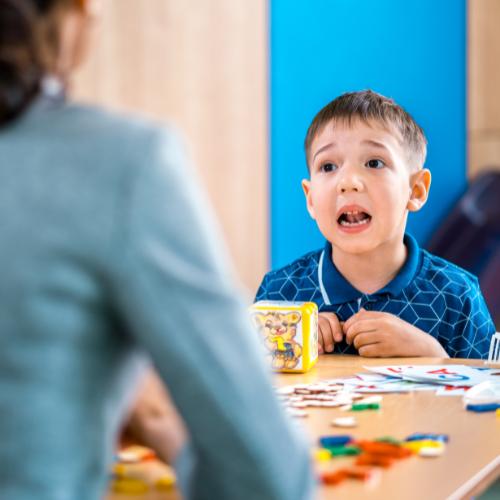
Ways to help your child's Articulation Develop
1. Use Over Articulations
Make it a habit to model slow, clear speech for your child. When you notice that he or she has difficulty saying certain sounds or words, emphasize those sounds in your speech. For example, you may say “Let’s have some mmmmmilk” if your child has trouble with /m/ sounds in words.
2. Describe your articulators
Talk about what your tongue, lips, and jaw are doing as you make sounds your child has trouble saying. You might say “When I make my mmmm sound, I close my lips.”
3. Get your child’s attention
Make sure your child is watching your mouth as you speak whenever possible. Hold toys or objects they want near your mouth as you model words. Position your child so he or she can see your face as you read books together. Have fun and put stickers on your face as you help your child practice imitating speech sounds or facial expressions. The more time they spend watching your mouth, the better!
4. Build general imitation skills
Your child will need to be good at imitating in order to work on articulation, so work on imitating all sorts of movements and sounds. You can play games like Simon Says, or just encourage your child to imitate silly actions you do or sounds you make.
5. Use both play and routine
Play is a great time to work on articulation, but we can’t play all day! Find ways to work speech sound practice into routines such as meals, bathtime, and brushing teeth. Think through one or two of your daily routines and come up with a list of words with your child’s target speech sound to model or help them practice saying. To target the /m/ sound during meals, you can focus on “milk,” “more,” “yummy,” and “messy.”
6. Slowly increase your expectations
Your child may learn to produce a sound in isolation (i.e., say “mmm” by itself) long before he or she can say it within a word. Or your child may be able to get the sound into a single word, but will still make the old error in conversation. Just like changing other habits, changing the way you talk is hard and takes time! Be patient and consistent with yourself and your child, and change will happen.
For fun ideas to target speech sounds in play, check out the blog post below by clicking on the button.
A speech-language pathologist can evaluate your child’s articulation development to determine if it’s within the range of what’s typical, or if your child is experiencing a delay or disorder. Reach out to us today for more information about speech-language therapy evaluations and intervention!
Get access to the Kid Connections Therapy free resources to guide you in helping your child with early language development.














